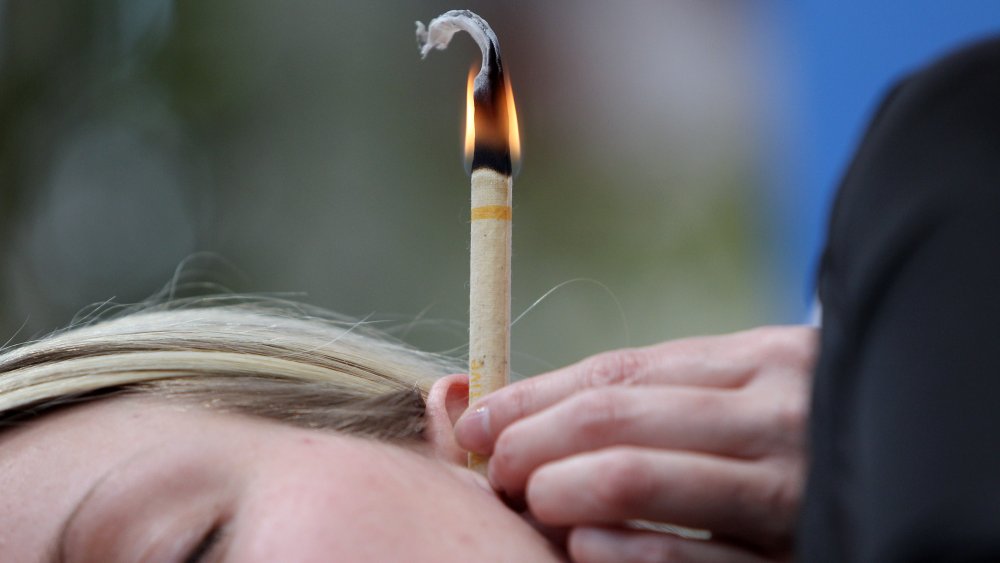The Truth About Ear Wax Candles
You've probably heard of ear candling. The alternative aural cleaning method calls for a person to lie on his or her side, and a ten-inch hollow and tapered candle made of fabric and covered with paraffin or beeswax to be inserted in his or her ear, with the wider side up (via Medical News Today). The candle is then lit, and the person whose ear is being cleaned waits for between 10 to 20 minutes. He or she is protected from hot wax by a piece of paper or foil that catches the drips.
The treatment is said to work by creating a vacuum which draws earwax blockage out. Among other things, ear candling is also meant to relieve sinus congestion, improve hearing, stop ringing in the ears, cure a variety of ear problems (including a ruptured eardrum and swimmers ear), as well as relieve vertigo. Hearing Health Matters says the treatment might sound questionable at best to ear specialists, but has become a popular remedy nonetheless.
So does ear wax candling really work?
Does ear candling work?
Medical News Today says there is no evidence to support that ear candling do what its proponents say they do. SELF says ear candles don't produce any form of pressure that can force out wax, and the residue that appears in the candle after the process ends is soot and residue produced by the candle itself. The FDA has not only debunked the practice — it's also warning that ear candling can cause injury.
The FDA says, "[We have] found no valid scientific evidence to support the safety or effectiveness of these devices for any medical claims or benefits. FDA has received reports of burns, perforated eardrums and blockage of the ear canal which required outpatient surgery from the use of ear candles. FDA is especially concerned because some ear candles are being advertised for use in children. Children of any age, including babies, are likely at increased risk for injuries and complications if they are exposed to ear candles."

